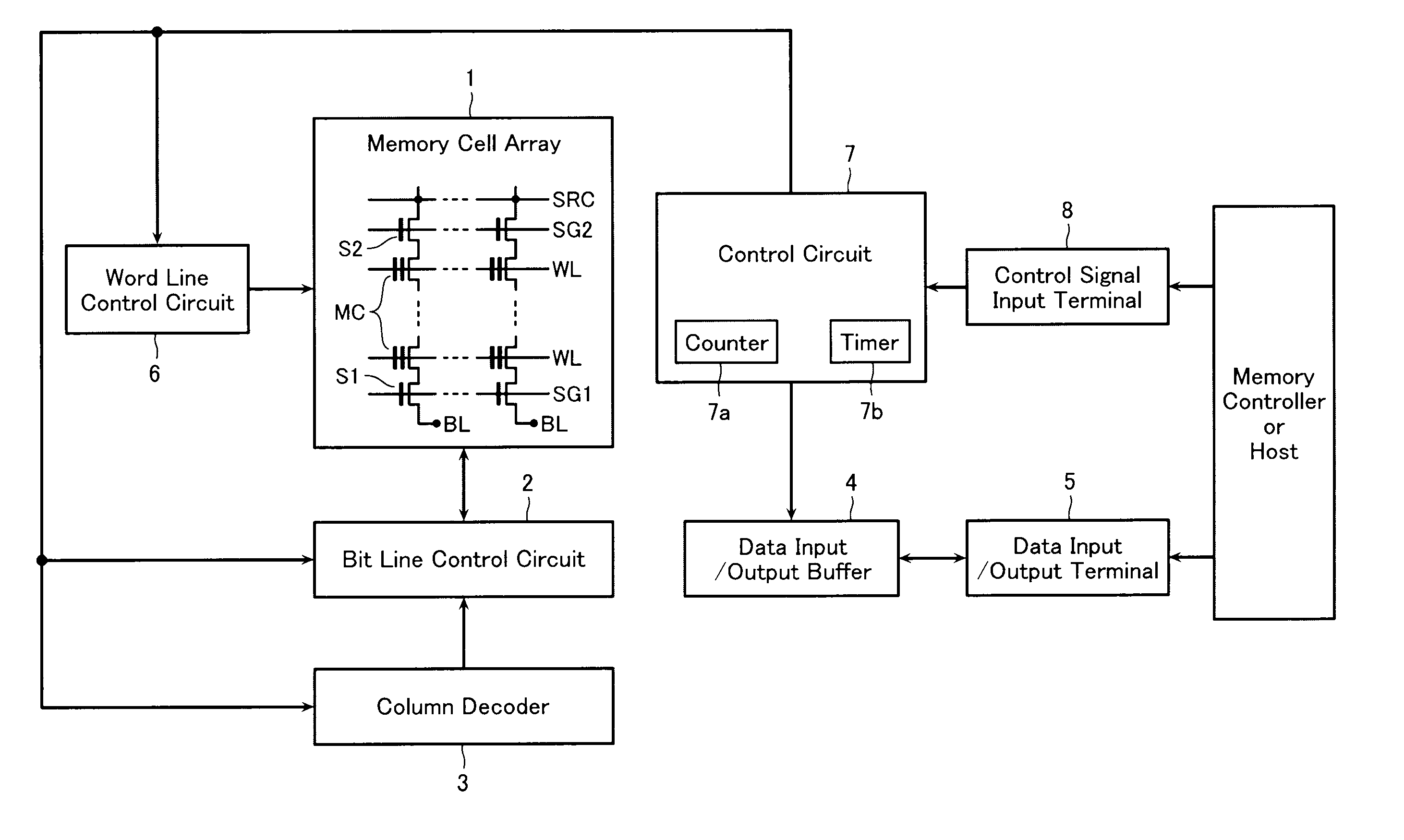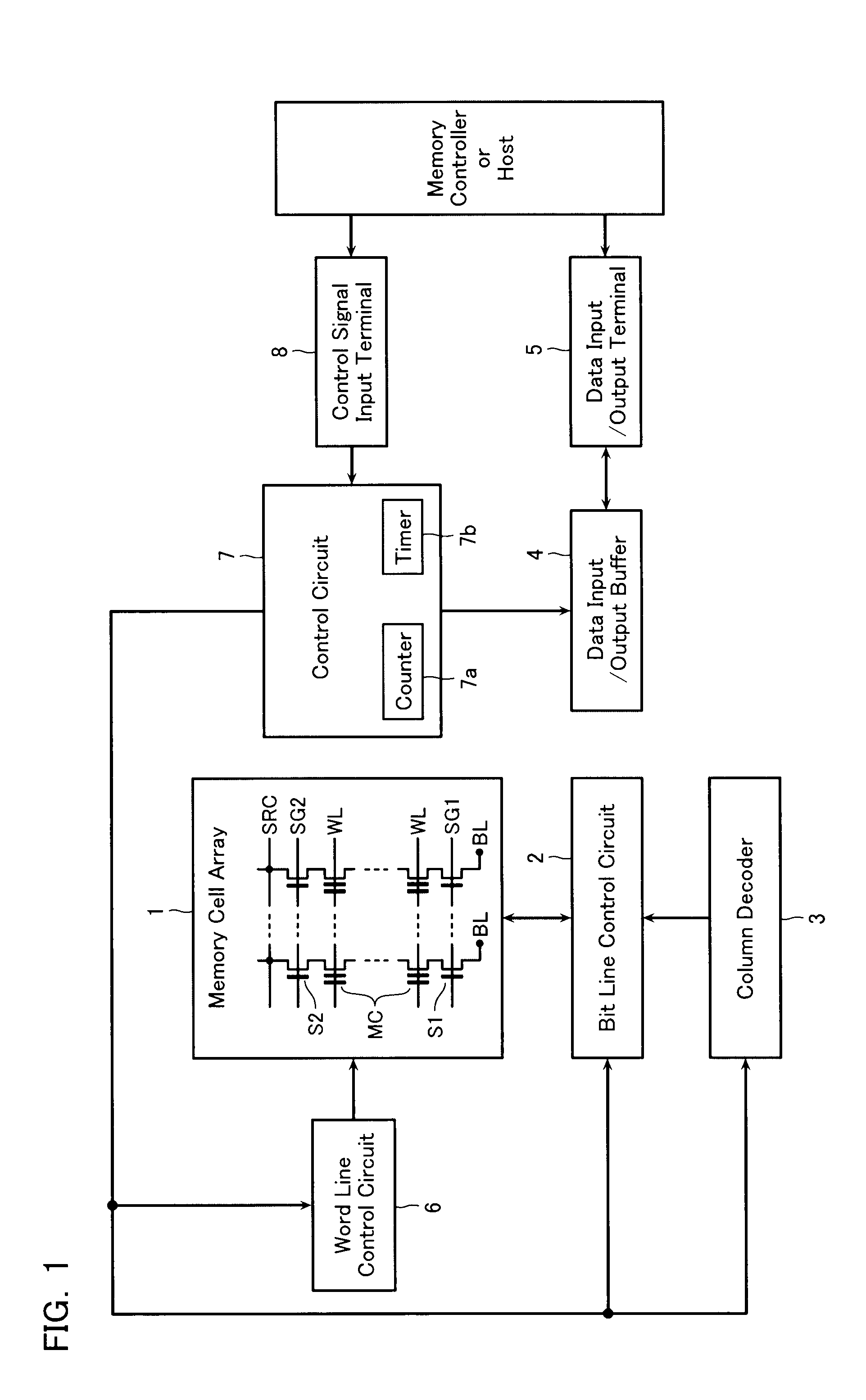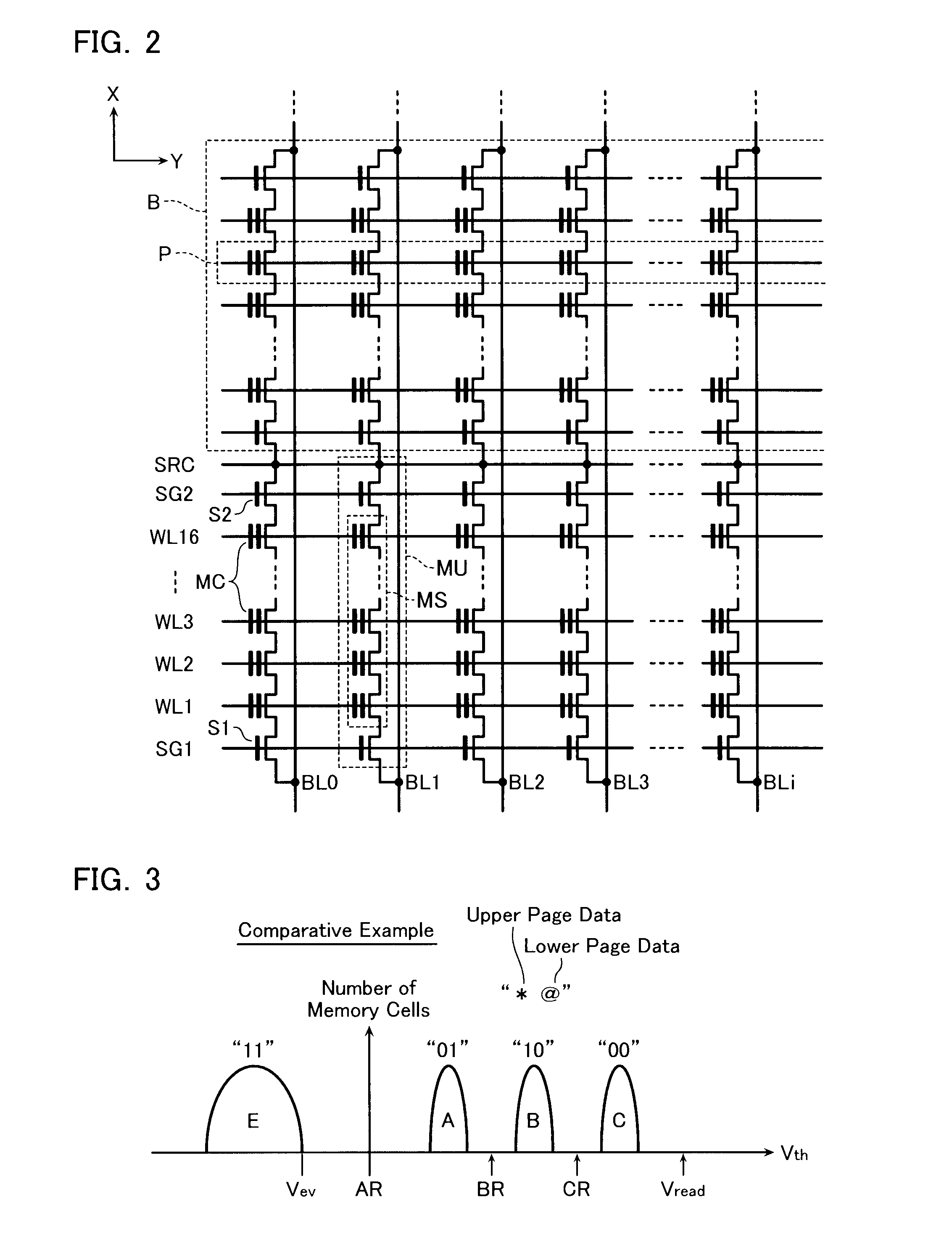Nonvolatile semiconductor memory device
a non-volatile, semiconductor technology, applied in static storage, digital storage, instruments, etc., can solve the problems of data reading operation failure, memory cell data change,
- Summary
- Abstract
- Description
- Claims
- Application Information
AI Technical Summary
Benefits of technology
Problems solved by technology
Method used
Image
Examples
first embodiment
[0040][Configuration]
[0041]FIG. 1 is a block diagram showing a configuration of a nonvolatile semiconductor memory device according to a first embodiment. The nonvolatile semiconductor memory device is a NAND type flash memory employing a four-value storing system. The nonvolatile semiconductor memory device includes a memory cell array 1 configured by disposing memory cells MC for storing data in a matrix arrangement. The memory cell array 1 includes a plurality of bit lines BL, a plurality of word lines WL, a source line SRC, and a plurality of memory cells MC. The memory cells MC are electrically-rewritable, and disposed at the intersections of the bit lines BL and word lines WL in a matrix arrangement.
[0042]The memory cell array 1 is connected to a bit line control circuit 2 configured to control the voltages of the bit lines BL and a word line control circuit 6 configured to control the voltages of the word lines WL. That is, the bit line control circuit 2 reads data of a memor...
second embodiment
[0074]Next, a nonvolatile semiconductor memory device according to a second embodiment will be explained with reference to FIG. 11 and FIG. 12. The whole configuration of the nonvolatile semiconductor memory device according to the present embodiment is the same as the first embodiment, and hence a detailed explanation thereof will not be provided here. Further, any portions that are configured the same as the first embodiment will be denoted by the same reference numerals, and a redundant explanation thereof will not be provided.
[0075]In the second reading operation according to the first embodiment, a reading operation is executed by changing the voltage to be applied to the selected word line WL from the reading voltages BR or CR to the voltages BRs or CRs to execute a shift reading operation, and by not changing the reading voltage AR to the voltage ARs but instead raising the voltage of the source line SRC from 0 V to the voltage Vsrc. In contrast, in the second reading operati...
third embodiment
[0082]Next, a nonvolatile semiconductor memory device according to a third embodiment will be explained with reference to FIG. 13 to FIG. 17. The whole configuration of the nonvolatile semiconductor memory device according to the present embodiment is the same as the first embodiment, and hence a detailed explanation thereof will not be provided. Any portions that are configured the same as the first embodiment will be denoted by the same reference numerals, and a redundant explanation thereof will not be provided.
[0083]In the first and second embodiments, it is explained that the voltage to be applied to the source line SRC in the second reading operation is one type of voltage, that is, the voltage Vsrc. In contrast, according to the present embodiment, the voltage to be applied to the source line SRC in the second reading operation can be set to a plurality of positive values, for example, two positive values. Explanation will now be given with reference to FIG. 13 and FIG. 14.
[0...
PUM
 Login to View More
Login to View More Abstract
Description
Claims
Application Information
 Login to View More
Login to View More - R&D
- Intellectual Property
- Life Sciences
- Materials
- Tech Scout
- Unparalleled Data Quality
- Higher Quality Content
- 60% Fewer Hallucinations
Browse by: Latest US Patents, China's latest patents, Technical Efficacy Thesaurus, Application Domain, Technology Topic, Popular Technical Reports.
© 2025 PatSnap. All rights reserved.Legal|Privacy policy|Modern Slavery Act Transparency Statement|Sitemap|About US| Contact US: help@patsnap.com



